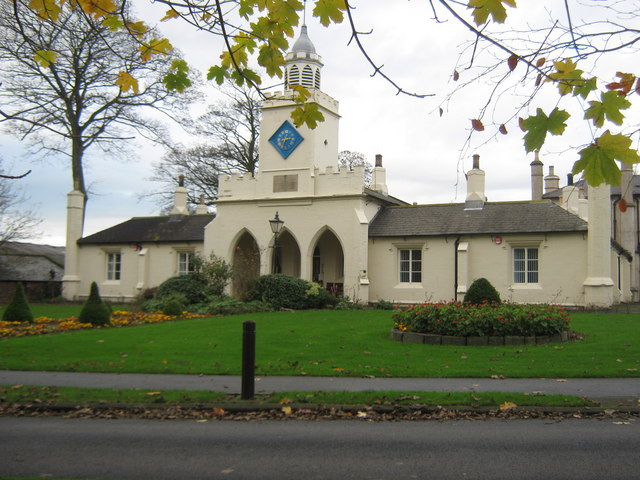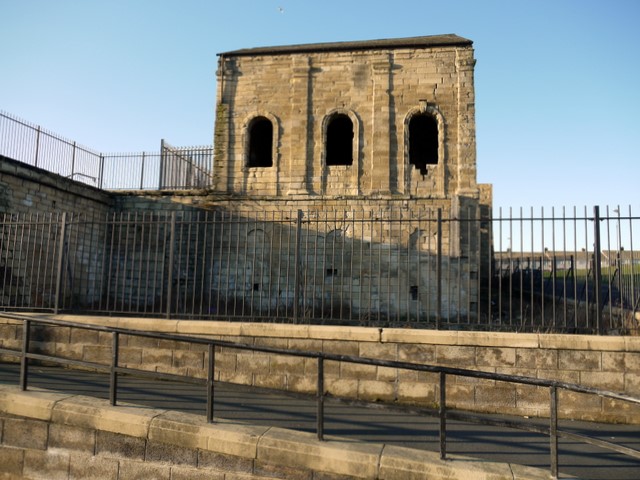Topics > Tees Valley > Civil Parishes in Tees Valley > Greatham Civil Parish > Greatham Parish, 1848
Greatham Parish, 1848
GREATHAM, a parish, in the union of Stockton, N. E. division of Stockton ward, S. division of the county of Durham, 7 miles (N.E. by N.) from Stockton; containing 687 inhabitants, of whom 635 are in the township of Greatham. This parish, which is about two miles from the mouth of the Tees, includes the township of Claxton, and comprises by measurement 3,399 acres of arable and pasture land in nearly equal portions; the surface is varied, and the views from the higher grounds are pleasingly diversified. Near the Tees are some extensive salt-marshes, on which were salt-works on a large scale, that have for many years been discontinued; great quantities of shrimps, muscles, and cockles are found in the bed of the river, and sent into the interior for sale. The Stockton and Hartlepool railway, diverging from the Clarence line at Billingham, in the vicinity, passes for two miles through the parish, and is carried over the meadows here by a viaduct 700 yards in length, supported on 92 arches of brick, 30 feet in height. From the softness of the ground the arches are built upon piles driven into the soil, in some parts for more than 60 feet; and in forming an appropriate foundation, more than 30,000 cubic feet of timber were used. The village is pleasantly seated on the acclivity of a hill, on the north side of a tributary to the Tees; and at no great distance is Greatham Hall, an elegant mansion beautifully situated, and commanding a fine view of the Cleveland hills.
The living is a discharged vicarage, valued in the king's books at £7. 1. 8.; net income, £179; patrons, the Master and Brethren of Greatham Hospital, who are also impropriators. The rectorial tithes have been commuted for £160, and the vicarial for £32; the glebe comprises 30 acres in the township of Greatham, and a moiety of 50 acres in the parish of Stranton. The church, erected on the site of a more ancient structure, which, with the exception of the nave, was taken down in 1792, is a plain neat edifice. The hospital was founded in 1272, by Robert de Stichell, Bishop of Durham, who endowed it with the manor of Greatham, which formed part of the forfeited lands of Peter de Montfort, granted by the crown to the see; it was established for the maintenance of a master, five priests, two clerks, and forty poor brethren, to be selected from the episcopal manors. The original endowment was augmented by Bishop Anthony Beck, who added a chaplain and clerk; and Edward IV. granted to the master a weekly market and two annual fairs. The hospital was governed under Bishop Stichell's foundation till the reign of James I., who, by a new charter in 1610, restricted the number of pensioners to a master, bailiff, and twelve poor aged bachelors, of whom six were inmates, and six out-pensioners, who received each 40s. per annum. In 1785, John William Egerton, Esq., LL.B., eldest son of the Bishop of Durham, and who had been collated to the mastership, rebuilt the chapel of the hospital, which had fallen into decay; and, succeeding in 1803 to the Earldom of Bridgewater, he devoted all the revenues of the hospital to its augmentation and improvement, rebuilding the whole for the more comfortable accommodation of the inmates. In 1819, also, he enlarged the buildings, for the reception of thirteen additional persons. Parkhurst's hospital was founded in 1762, by Dormer Parkhurst, Esq., master of Greatham hospital, who endowed it with lands in Stockton producing about £100 per annum, for six poor widows, or unmarried women, of 50 years of age and upwards, of the township of Greatham; the government is in trustees, and the master of Greatham hospital is patron.
Extract from: A Topographical Dictionary of England comprising the several counties, cities, boroughs, corporate and market towns, parishes, and townships..... 7th Edition, by Samuel Lewis, London, 1848.
Greatham transferred from Stockton to Hartlepool Poor Law Union, when it was formed in 1859.
In 1866, the township of Greatham became a civil parish: Greatham Civil Parish.
In 1866, the township of Claxton became a civil parish: Claxton Civil Parish.

Co-Curate Page
Hospital of God, Greatham
- Overview Map Street View Former almshouse, now residences for the elderly. This is a Grade 2 listed building. The Hospital of God was originally founded by the Bishop of Durham, Robert …

Co-Curate Page
Claxton Township (Greatham), 1848
- CLAXTON, a township, in the parish of Greatham, union of Stockton-upon-Tees, N. E. division of Stockton ward, S. division of the county of Durham, 7 miles (N.N.E.) from Stockton; containing …

Co-Curate Page
Stockton and Hartlepool Railway
- The Stockton and Hartlepool Railway was a branch line from Billingham to the docks at Hartlepool, which connected with the Clarence Railway. The line opened for goods traffic in 1840 and …


Co-Curate Page
Hospital of God, Greatham
- Overview Map Street View Former almshouse, now residences for the elderly. This is a Grade 2 listed building. The Hospital of God was originally founded by the Bishop of Durham, Robert …

Co-Curate Page
Claxton Township (Greatham), 1848
- CLAXTON, a township, in the parish of Greatham, union of Stockton-upon-Tees, N. E. division of Stockton ward, S. division of the county of Durham, 7 miles (N.N.E.) from Stockton; containing …



